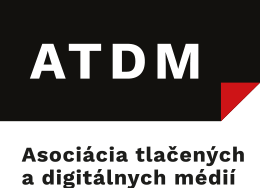By Chee Jing Yee
“Journalists need content design strategies and tools to help them (with content creation),” Lin Yi Lin, the Data Development Department Manager for United Daily News Group, told participants at WAN-IFRA’s most recent Digital Media Asia conference.
Lin explained how they created a data initiative with aims of transforming their local media landscape through data-driven initiatives.
Founded in 1951, the company has an extensive portfolio that includes the United Daily News and Economic Daily News newspapers as well as the World Journal, for the global Chinese community, which is also the largest Chinese-language daily newspaper in North America and has its headquarters in New York.
UDN has the largest first-party data reserves among Taiwanese news publications, she said, with 27.6 million news archives, articles and photos with a data size of 400TB.
In 2021, UDN’s Data Development Department established the Curate X Program to integrate data into the newsroom workflow, equipping journalists with the knowledge and skills to capitalise on this data, focusing on effective content monetisation and user-centric approaches.
Consensus Map provides a guideline for journalists
An initiative that leverages data in the Curate X Program is UDN’s International Consensus Map, which aids journalists in content creation. It acts as a guideline for journalists to help them deliver precise content effectively by tailoring topics in accordance with the map.
“This dynamic model is updated daily through our central data system (and is aligned with breaking news),” said Lin. “We also conduct meetings to review the topics in the map over time.”
These meetings serve as platforms for the team to brainstorm for more compelling content that aligns with user interests and needs.
The utilitarian nature of the Consensus Map is illustrated with two case studies.
With the layering of consensus map data, the DDD created a specific column in their news website for real life stories in late 2021. However, in the third quarter of 2022 during Taiwan’s local election, there was a significant drop in subscriber conversion rate for the real life column.
Identifying the topics that convert subscribers
Further analysis of the map revealed that the subscriber conversion rates for the specific topics such as education, opinion, society and culture remain consistently high, prompting the newsroom to continue writing real life stories in relation to those subtopics.
This approach paid off, with a rise in conversion rate for real life content in the fourth quarter of 2022.
In the third quarter of 2021, non-member visits to the news site fell for topics under weapons and intelligence.
Using the Consensus Map as a guiding framework, the team experimented with different approaches, using special articles on prominent events such as the Airshow China 2021 and the Singapore Airshow 2022 to increase non-member visits. These efforts paid off with increases in non-member visits.
“Journalists need content design strategies and tools to help them (with content creation),” Lin said.
The establishment of cross-functional teams that set clear goals and have a shared culture is also essential for effective collaboration. In addition, securing high-level endorsements for projects is useful.
Change needs top-down support
“With chief management support, it will make the change possible,” Lin said.
News organisations also need to experiment with new designs via trial and error, learning from failures to refine their content design strategies.
About the author: Chee Jing Yee is a final year student in Nanyang Technological University’s Wee Kim Wee School of Communication and Information, specialising in public communication campaigns.
WAN-IFRA Senior Editor Brian Veseling contributed to this report.
The post Data initiative helps Taiwan’s United Daily News Group boost engagement appeared first on WAN-IFRA.
